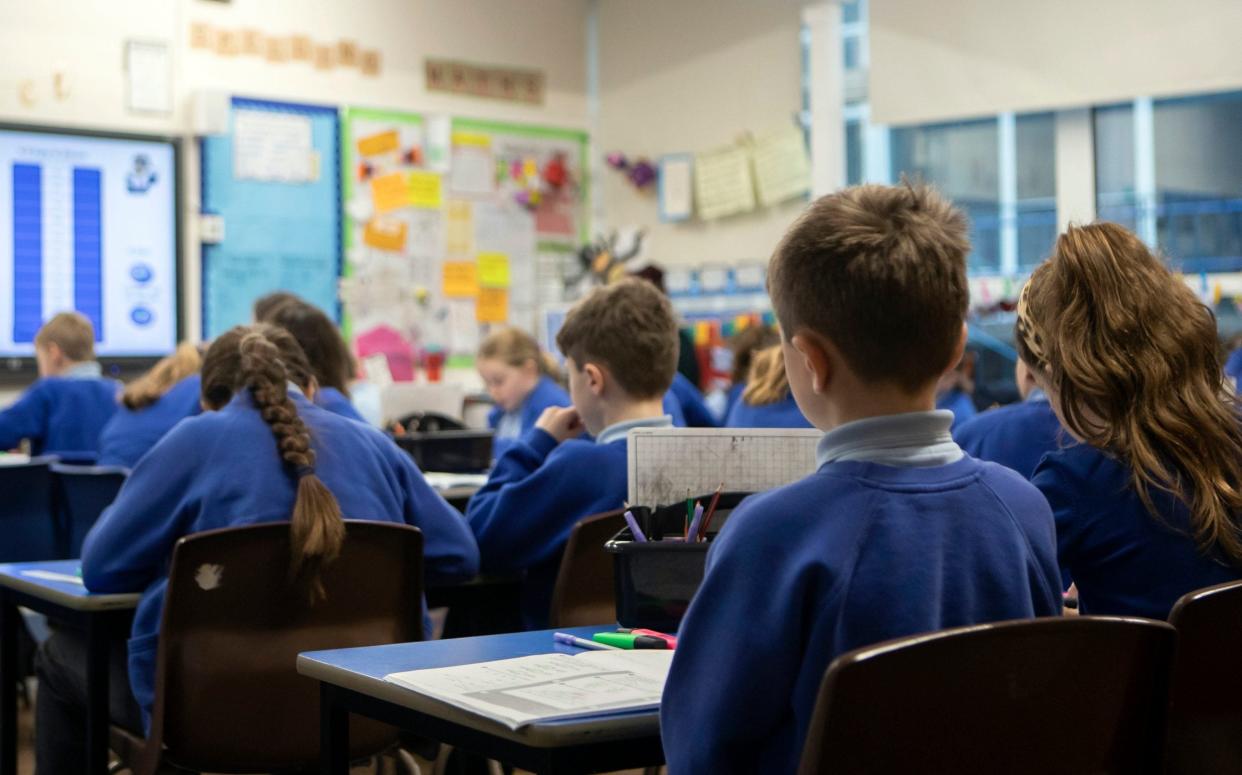Boys beat girls in first national times tables test

Boys beat girls by a narrow margin in the first national times tables test for nine-year-olds.
More than 600,000 pupils in Year 4 at schools in England were asked to answer 25 multiplication sums with six seconds per question this summer.
The results, published on Thursday, show that the mean average score out of 25 was 20 for boys, just ahead of 19.6 for girls.
Overall, 27 per cent of pupils received full marks and 12 per cent achieved 24 out of 25. The average score for all pupils was 19.8.
Prof Alan Smithers, the director of the Centre for Education and Employment, said: "It isn’t fashionable to talk about psychological differences between the sexes, but if you look at test and examination results, generally girls do better at English and the humanities and boys are stronger in maths and the physical sciences."
He added: "It’s very good that the results of the tests are so encouraging because learning the tables is fundamental to be able to handle calculations easily in your head, so it will give them a much better basis for success at maths in the future."
Girls outperformed boys in all Sats exams last year except for maths, where 72 per cent of boys met the expected standard, compared to 71 per cent of girls.
The biggest gender attainment gap for the exams, which are sat at the end of primary school, was in writing, where girls were 14 percentage points ahead of boys.
The test results showed that English pupils had an average score of 19.4, underperforming their peers with a foreign first language, with an average score of 21.2.
Pupils of Chinese ethnicity were the best-performing, with an average score of 23.5, followed by Indian pupils, on 22.7. The lowest-performing ethnic group were white travellers of Irish heritage, with an average score of 13.2.
London was the best-performing region, with pupils achieving an average test score of 20.9, while the South West had the lowest score, at 19.1.
Hammersmith and Fulham was at the top of the local authority leaderboard, with an average score of 22. The Isle of Wight had the lowest average local authority score at 18.
Government data showed that summer-born pupils performed less well than their peers born earlier in the academic year. The average score for August-born pupils was 19, compared to 20.6 for September-born pupils.
Disadvantaged pupils underperformed compared to other pupils with an average score of 17.9, compared to 20.5 for those who are not known to be eligible for free school meals and are not in care.
The Government announced plans to introduce times tables tests in 2018 as part of an ambition to make England a "world leader" in mathematics, alongside China and Singapore.
The tests, which are completed online, became compulsory for Year 4 primary school pupils in England this year.
Nick Gibb, the schools minister, said: "Learning your times tables fluently is so important for children – both for their time in school and in day-to-day life, and today’s data gives us an important benchmark to build from over the years to come.
"Mathematics is vital for doing essential calculations like how a higher base rate will affect your mortgage or working out the best multi-pack bargains in a supermarket."

 Yahoo News
Yahoo News 
